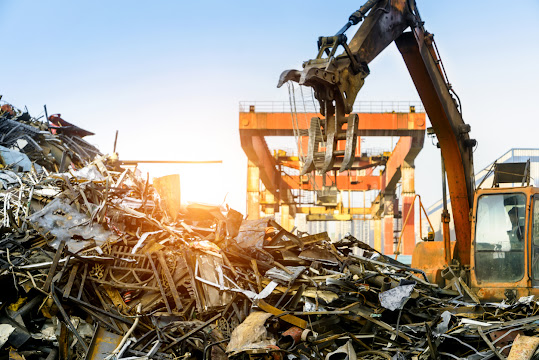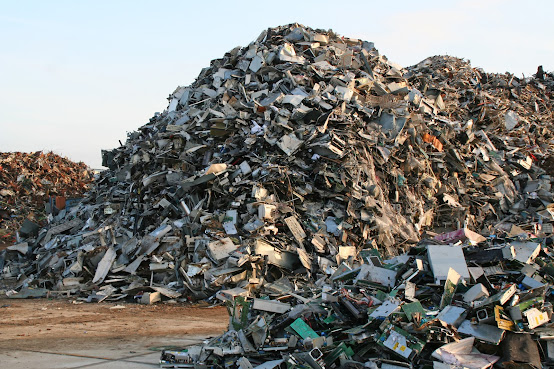How Non-Ferrous Scrap Metal Gets Recycled: Here's the Process
In today's environmentally conscious world, the importance of recycling non-ferrous scrap metal cannot be overstated.
This blog post aims to shed light on the comprehensive process of recycling non-ferrous scrap metal, from its collection and sorting to its environmental and economic impact.
By the end of this detailed exploration, you will clearly understand the significance of non-ferrous scrap metal Melbourne recycling and the opportunities it presents.
Non-Ferrous Scrap Metal: What Is It?
Non-ferrous scrap metals are metals that do not contain significant amounts of iron. Common examples include aluminium, copper, lead, zinc, and brass. These metals are prized for their unique properties, including corrosion resistance, malleability, and conductivity, making them valuable in various industries.
The Importance of Recycling Non-Ferrous Scrap Metal
Recycling non-ferrous scrap metal is of utmost importance due to the conservation of natural resources, energy savings, and reduction in greenhouse gas emissions. Recycling these metals minimises the need for primary metal production, which often involves substantial energy consumption and environmental impact.
Collection and Sorting: Where Does It All Begin?
Recycling non-ferrous scrap metal starts with collecting these valuable materials from various sources, such as household recyclables, construction sites, manufacturing facilities, and automotive salvage yards. Municipal recycling programs and industrial sources are crucial in collecting non-ferrous scrap metal, ensuring a steady supply for recycling facilities.
Proper sorting of non-ferrous scrap metal Melbourne is essential for efficient recycling. This involves separating different types of non-ferrous metals to ensure they can be processed effectively. Sorting also helps identify and remove any contaminants that may be present in the scrap metal.
Processing Techniques: From Scraps to New Products
Once collected and sorted, non-ferrous scrap metals undergo a series of processing techniques to transform them into usable materials. These techniques include shredding or shearing to reduce the metals' size, followed by melting and purification processes.
The melting and purification processes are critical steps in recycling non-ferrous scrap metal. During melting, the metals are heated to high temperatures to melt them into a liquid form. The purification process involves removing any impurities from the melted metal to ensure the recycled material meets the required quality standards.
The refined non-ferrous scrap metals are then moulded into new products or used as raw materials for various industries. This transformation process is essential to closing the loop on material use and reducing the demand for new virgin resources.
Environmental Benefits: Making a Positive Impact
Recycling non-ferrous scrap metals offers substantial environmental benefits. One key advantage is the reduction in energy consumption compared to primary metal production. Using recycled metals can significantly decrease the energy required to extract, process, and refine raw materials.
Additionally, recycling non-ferrous scrap metal minimises landfill waste and helps conserve natural resources such as water and minerals. This sustainable practice contributes to a healthier environment and plays a vital role in mitigating the impact of resource extraction on ecosystems.
Economic Impact: Turning Scraps Into Opportunities
The economic implications of non-ferrous scrap metal recycling are equally significant. Recycling facilities and the broader recycling industry create job opportunities, contributing to economic growth and stability. By participating in non-ferrous scrap metal recycling, individuals and businesses can benefit from economic incentives through cost-effective material sourcing.
Challenges Faced: Overcoming Obstacles for a Greener Future
While non-ferrous scrap metal recycling offers numerous advantages, it also presents challenges that must be addressed. Contamination issues during the collection and sorting of scrap metal can impact the quality of the recycled materials. To overcome this challenge, innovative technological solutions are being developed to improve the efficiency and effectiveness of the recycling process.
In conclusion, recycling non-ferrous scrap metals is a vital component of sustainable resource management. By participating in local recycling programs or ensuring proper disposal at designated facilities, everyone can contribute to a greener planet. The significance of non-ferrous scrap metal Melbourne recycling extends beyond environmental protection; it is about building a sustainable future where resources are utilised responsibly. So, choose the right recycler to handle the recycling of your scrap metal.
We hope this comprehensive exploration has provided valuable insights into recycling non-ferrous scrap metals. Let's work together towards a greener planet by embracing sustainable practices and supporting the recycling of non-ferrous scrap metals.




Comments
Post a Comment